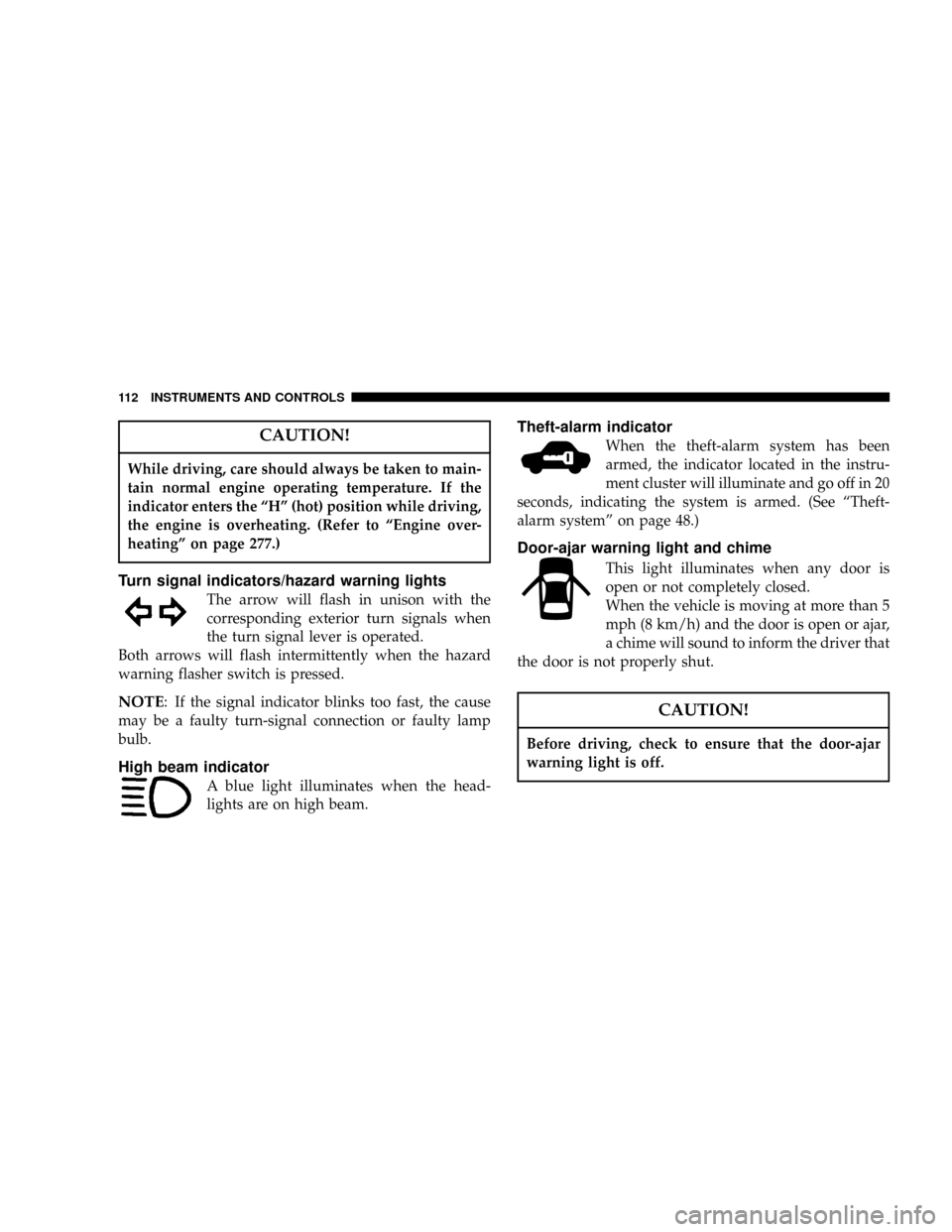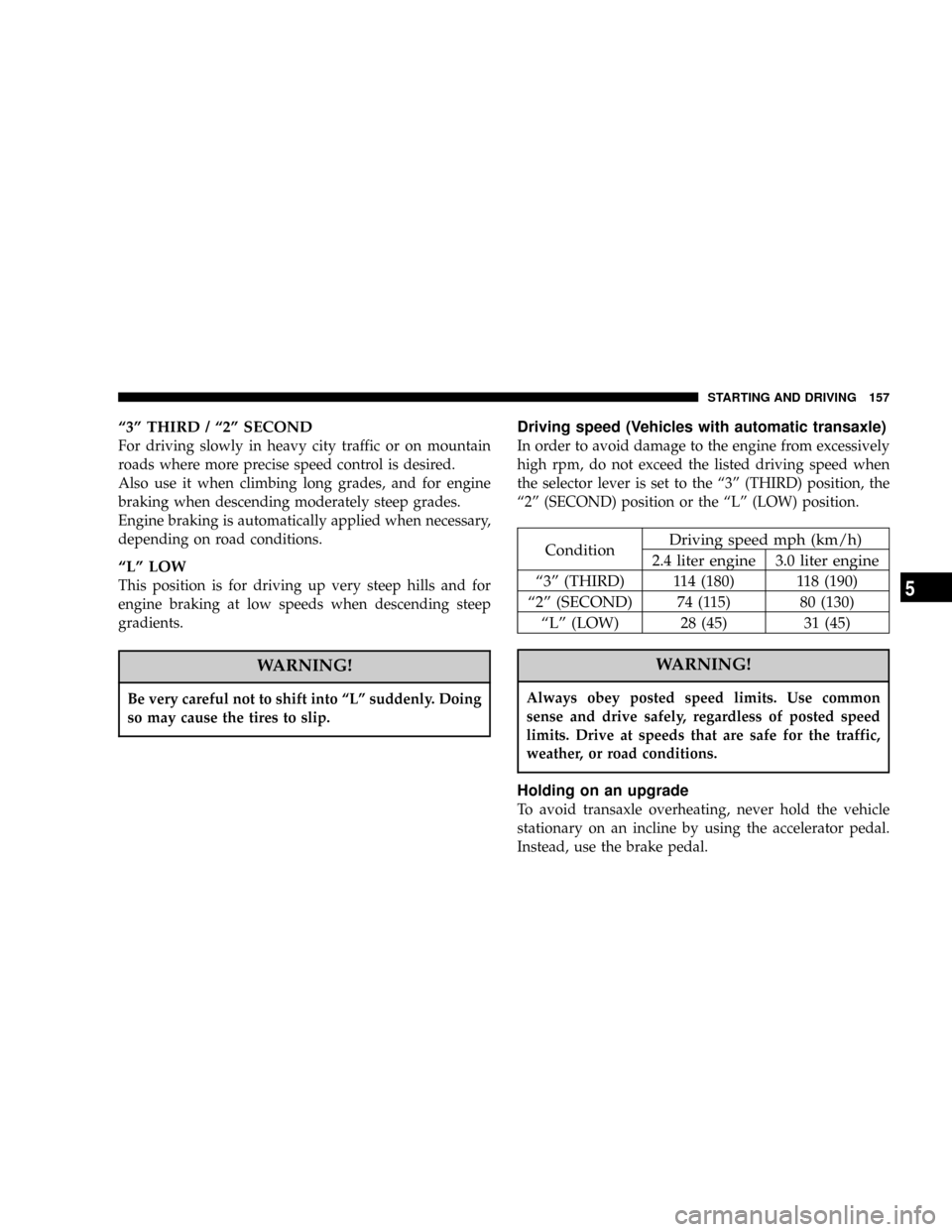Page 17 of 394
If this problem occurs¼
Problem Do this Ref. page
The engine does not start.
The lights do not come on or dim.
The horn does not honk or weak sound.
The battery may have a weak charge. P. 278
The engine coolant temperature gauge
indicator enters the ªHº (hot) position.
Steam comes out of the engine
compartment.
The engine is overheated.
Carefully stop the vehicle in a safe place.
If necessary call for roadside assistance.P. 277
INTRODUCTION 17
1
Page 18 of 394
If this problem occurs¼
Problem Do this Ref. page
The vehicle is stuck in sand, mud, or
snow.1. Carefully rock the vehicle by shifting the transmission
from low to reverse.
WARNING
1.When attempting to rock your vehicle out of a stuck
position, be sure that no one is near the vehicle. The
rocking motion may cause the vehicle to suddenly lurch
forward or backward, and injure bystanders.
2.Avoid racing the engine or spinning the wheels.
Prolonged efforts to free a stuck vehicle may result in
overheating and transaxle failure.
If the vehicle remains stuck after several rocking
attempts, have a towing service pull the vehicle out.P. 261
The brakes are not functioning
properly after crossing a puddle or
stream.Dry out the brakes by driving slowly while lightly
depressing the brake pedal.P. 262
18 INTRODUCTION
Page 108 of 394
11. High beam indicator!P. 1 1 2
12. Cruise control indicator!P. 1 1 3
13. Theft-alarm indicator!P. 1 1 2
14. Malfunction indicator light
(SERVICE ENGINE SOON)!P. 1 1 5
15. Oil pressure warning light!P. 1 1 4
16. Charging system warning light!P. 1 1 4
17. Overheating warning light!P. 1 1 6
18. Traction control system warning light
(if so equipped)!P. 1 1 9
19. Automatic transaxle indicator
(Vehicles with Autostick automatic transaxle-if so
equipped)!P. 1 1 9
Speedometer
The speedometer indicates vehicle speed.
·The outer scale indicates miles per hour.
·The inner scale indicates kilometers per hour.
Tachometer
The tachometer indicates engine revolutions per minute.
This allows the driver to determine the most efficient
gear range and engine speed combinations.
D04A0500
2.4 liter
engine3.0 liter
engine
108 INSTRUMENTS AND CONTROLS
Page 112 of 394

CAUTION!
While driving, care should always be taken to main-
tain normal engine operating temperature. If the
indicator enters the ªHº (hot) position while driving,
the engine is overheating. (Refer to ªEngine over-
heatingº on page 277.)
Turn signal indicators/hazard warning lights
The arrow will flash in unison with the
corresponding exterior turn signals when
the turn signal lever is operated.
Both arrows will flash intermittently when the hazard
warning flasher switch is pressed.
NOTE: If the signal indicator blinks too fast, the cause
may be a faulty turn-signal connection or faulty lamp
bulb.
High beam indicator
A blue light illuminates when the head-
lights are on high beam.
Theft-alarm indicator
When the theft-alarm system has been
armed, the indicator located in the instru-
ment cluster will illuminate and go off in 20
seconds, indicating the system is armed. (See ªTheft-
alarm systemº on page 48.)
Door-ajar warning light and chime
This light illuminates when any door is
open or not completely closed.
When the vehicle is moving at more than 5
mph (8 km/h) and the door is open or ajar,
a chime will sound to inform the driver that
the door is not properly shut.
CAUTION!
Before driving, check to ensure that the door-ajar
warning light is off.
112 INSTRUMENTS AND CONTROLS
Page 116 of 394

CAUTION!
²Prolonged driving with the malfunction indicator
light on may result in further damage to the
emission control system. Continued driving could
also affect fuel economy and driveability.
²If the light does not illuminate when the ignition
key is turned to the ªONº position (bulb check),
have the system checked at an authorized dealer.
NOTE: Do not disconnect the battery cable when the
Malfunction indicator light (SERVICE ENGINE SOON) is
ON.
The engine electronic control module stores critical OBD
data, which may be lost if the battery is disconnected.
This can make rapid diagnosis more difficult.
If the fuel tank filler cap is not secured properly, the
light may come on. Be sure the fuel tank filler tube cap
is tightened every time you add fuel. (Turn the fuel
tank filler cap clockwise until you hear clicking
sounds.)Overheating warning light
If the warning light illuminates while the
engine is running, it is possible that the
engine is overheated.
Immediately park your vehicle in a safe
place and make the necessary corrections.
(Refer to ``Engine overheating'' on page 277.)
While driving, care should always be taken to maintain
the normal operating temperature.
Supplemental Restraint System (SRS)-air bag
warning light
This light illuminates when the Supplemen-
tal Restraint System-air bag is not working
properly. It will also illuminate for about 7
seconds after the ignition key is turned to the ªONº
position or after the engine is started. The light should
then go out.
Check the light every time the vehicle is started.
If it does not illuminate, or stays on for more than
approximately 7 seconds after the ignition key is turned
ªONº or after the engine is started, or if it comes on while
116 INSTRUMENTS AND CONTROLS
Page 157 of 394

ª3º THIRD / ª2º SECOND
For driving slowly in heavy city traffic or on mountain
roads where more precise speed control is desired.
Also use it when climbing long grades, and for engine
braking when descending moderately steep grades.
Engine braking is automatically applied when necessary,
depending on road conditions.
ªLº LOW
This position is for driving up very steep hills and for
engine braking at low speeds when descending steep
gradients.
WARNING!
Be very careful not to shift into ªLº suddenly. Doing
so may cause the tires to slip.
Driving speed (Vehicles with automatic transaxle)
In order to avoid damage to the engine from excessively
high rpm, do not exceed the listed driving speed when
the selector lever is set to the ª3º (THIRD) position, the
ª2º (SECOND) position or the ªLº (LOW) position.
ConditionDriving speed mph (km/h)
2.4 liter engine 3.0 liter engine
ª3º (THIRD) 114 (180) 118 (190)
ª2º (SECOND) 74 (115) 80 (130)
ªLº (LOW) 28 (45) 31 (45)
WARNING!
Always obey posted speed limits. Use common
sense and drive safely, regardless of posted speed
limits. Drive at speeds that are safe for the traffic,
weather, or road conditions.
Holding on an upgrade
To avoid transaxle overheating, never hold the vehicle
stationary on an incline by using the accelerator pedal.
Instead, use the brake pedal.
STARTING AND DRIVING 157
5
Page 162 of 394

If the ªNº indicator light in the instrument panel flashes,
there could be a malfunction with the automatic transaxle
system. Identify and take action in accordance with the
following procedures:
1. The ªNº indicator light flashes rapidly (twice per
second) in the ªDº or ªAutostickº range.
If this occurs, the automatic transaxle fluid is overheat-
ing. Park your vehicle in a safe place but do not turn off
the engine. Move the selector lever to the ªPº position
and open the hood. Keep the engine idling.
After a while, move the selector lever to the ªDº or
ªAutostickº position and confirm that the ªNº indicator
light stops flashing. It is safe to continue driving if the
ªNº light no longer flashes.
Be sure to carry out this check with the selector lever in
the ªDº or ªAutostickº position. The ªNº indicator light
warning function operates only in the ªDº or ªAutostickº
range.
If the ªNº indicator light continues flashing or flashes
intermittently, have your vehicle inspected by an autho-
rized dealer.2. The ªNº indicator light flashes slowly (once per
second) in the ªDº or ªAutostickº range.
The automatic transaxle safety device may be operating
due to a malfunction.
Have your vehicle inspected by an authorized dealer as
soon as possible.
Selector positions (Main gate)
P-PARK
This position locks the transaxle to prevent the vehicle
from moving. The engine can be started in this position.
R - REVERSE
Shift into this position only after the vehicle has come to
a complete stop.
CAUTION!
Never shift into the ªPº (PARK) or ªRº (REVERSE)
position while the vehicle is in motion. If the lever is
shifted into the ªPº or ªRº position while the vehicle
is in motion, the transaxle may be damaged.
162 STARTING AND DRIVING
Page 198 of 394

CAUTION!
Damage to the catalytic converter can result if your
vehicle is not kept in proper operating condition. In
the event of an engine malfunction, particularly one
involving engine misfire or other apparent loss of
performance, have your vehicle serviced promptly.
Prolonged operation of your vehicle while it is
overheated may result in damage to the converter
and vehicle.
WARNING!
²Do not park or operate this vehicle in areas where
combustible materials such as dry grass or leaves
can come in contact with a hot exhaust, since a fire
could occur.
²Undercoating should not be applied to the cata-
lytic converter.
To minimize the possibility of catalytic converter dam-
age:
1. Use UNLEADED GASOLINE ONLY of the type rec-
ommended in ªFuel selectionº.
2. Do not drive with an extremely low fuel level; running
out of fuel could damage the catalytic converter.
3. Do not shut off the engine or interrupt the ignition
when the transaxle is in gear and the vehicle is in motion.
4. Do not try to start the engine by pushing or towing the
vehicle. If the battery is weak or discharged, use jumper
cables to properly start the engine.
5. Do not idle the engine with any spark plug wires
disconnected or removed, such as when performing
diagnostic tests.
6. Do not idle the engine for prolonged periods if it is
idling roughly or otherwise obviously malfunctioning.
7. To prevent the catalytic converter from being dam-
aged due to unburned gas, do not race the engine when
turning off the ignition switch.
198 STARTING AND DRIVING